Dioscin
- CAS NO.:19057-60-4
- Empirical Formula: C45H72O16
- Molecular Weight: 869.06
- MDL number: MFCD02094174
- EINECS: 618-347-7
- SAFETY DATA SHEET (SDS)
- Update Date: 2025-12-24 15:44:27
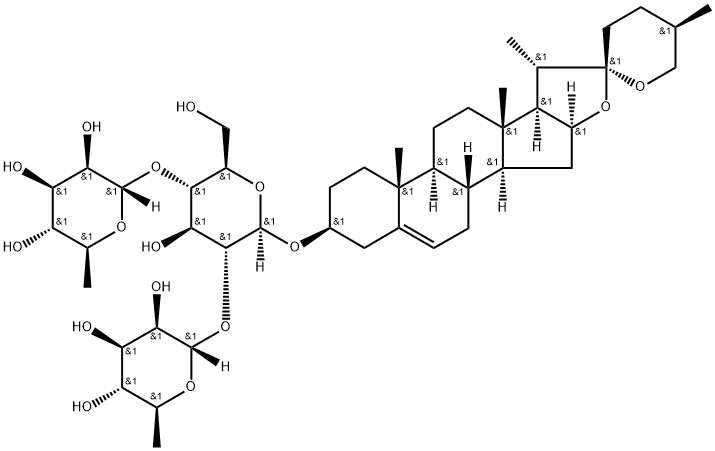
What is Dioscin?
Description
Dioscin is extracted from Dioscorea nipponica. Rhizoma Dioscoreae Nipponicae is the dry rhizome of this plant. It can be orally used to treat joint pain, arthritis, malaria, and chronic bronchitis. In addition, it can also be used externally to treat sore carbuncle swollen. Rhizoma Dioscoreae Nipponicae is commonly used in the northeast region, Shanxi province, and Shandong province of China.
Physical properties
Appearance: white powder. Solubility: insoluble in water, petroleum ether, and benzene; soluble in methanol, ethanol, and acetic acid; slightly soluble in acetone and amyl alcohol. Melting point: 294–296℃. Specific optical rotation: ?115° (c?=?0.373, ethanol).
History
Japanese scientists firstly reported and analyzed the structure of dioscin isolated from the saponins of Japanese Dioscoreaceae. V . However, the biological activities of dioscin have not attracted the interests of scientists until the late 1990s and the beginning of this century. It is now believed that dioscin may have therapeutic effects on reducing blood lipids and protecting the liver, as well as antivirus, antiinflammatory, and antitumor effects. After the implementation of standardization of traditional Chinese medicine, dioscin as the quality control specification of Dioscorea nipponica Makino and other traditional Chinese medicine has attracted more attentions and researches. In China, dioscin tablets have been used to treat hyperlipidemia in the clinical practice. However, no corresponding drugs are available on the market in other countries. In addition, dioscin is also an important predecessor for synthesizing steroid hormones . Dioscorea nipponica Makino, which is used to extract dioscin, primarily comes from wild plants, whose resources are limited.
The Uses of Dioscin
Dioscin, a natural steroid saponin that has been shown to promote anticancer activity against several forms of cancers. Dioscin induces cancer cell apoptosis through elevated oxidative stress mediated by downregulation of peroxiredoxins.
Indications
This drug was recorded in the national standards for chemical drugs, volume 5. Dioscin tablets, containing total dioscin, are used to treat coronary heart disease, coronary insufficiency, as well as control hyperlipidemia.
Definition
ChEBI: Dioscin is a spirostanyl glycoside that consists of the trisaccharide alpha-L-Rha-(1->4)-[alpha-L-Rha-(1->2)]-beta-D-Glc attached to position 3 of diosgenin via a glycosidic linkage. It has a role as a metabolite, an antifungal agent, an antiviral agent, an antineoplastic agent, an anti-inflammatory agent, a hepatoprotective agent, an apoptosis inducer and an EC 1.14.18.1 (tyrosinase) inhibitor. It is a spirostanyl glycoside, a spiroketal, a hexacyclic triterpenoid and a trisaccharide derivative. It is functionally related to a diosgenin. It derives from a hydride of a spirostan.
Pharmacology
Studies showed that compound preparations containing dioscin can increase coronary blood flow, reduce myocardial oxygen consumption, and protect myocardial
ischemia and ischemia-reperfusion injury, which is beneficial for alleviating myocardial ischemia and angina. In addition, dioscin can regulate the lipid metabolism
and improve hemodynamics. Dioscin can also prevent atherosclerosis by reducing
serum total cholesterol, triglyceride, low-density lipoprotein, and oxidized lowdensity lipoprotein, reducing the whole blood viscosity and plasma viscosity at high
and low shear rates, and relieving arterial wall lipid infiltration and plaque formation. Furthermore, dioscin can reduce liver fat deposition, which may be related to
promoting cholesterol secretion metabolism.
It has also been reported that dioscin can induce the apoptosis of a variety of
tumor cells, including gastric cancer cells, breast cancer cells, lung cancer cells, oral
squamous cell carcinoma, and cervical cancer cells. The mechanisms are related to
reducing the oxidative stress and inhibiting some cellular survival signaling pathways
Dioscin can induce antioxidant enzymes, lower blood lipids, improve insulin
resistance, inhibit the inflammatory response, reduce the damage of alcoholic hepatitis, and decrease the hepatic injury induced by acetaminophen .
Properties of Dioscin
| Melting point: | 275~277℃ |
| alpha | D13 -115° (c = 0.373 in ethanol) |
| Density | 1.39±0.1 g/cm3(Predicted) |
| storage temp. | under inert gas (nitrogen or Argon) at 2-8°C |
| solubility | DMSO (Slightly), Methanol (Slightly, Sonicated) |
| pka | 12?+-.0.70(Predicted) |
| form | Solid |
| color | White to Off-White |
Safety information for Dioscin
| Signal word | Warning |
| Pictogram(s) |
 Exclamation Mark Irritant GHS07 |
| GHS Hazard Statements |
H315:Skin corrosion/irritation H319:Serious eye damage/eye irritation |
| Precautionary Statement Codes |
P280:Wear protective gloves/protective clothing/eye protection/face protection. P302+P352:IF ON SKIN: wash with plenty of soap and water. P305+P351+P338:IF IN EYES: Rinse cautiously with water for several minutes. Remove contact lenses, if present and easy to do. Continuerinsing. P332+P313:IF SKIN irritation occurs: Get medical advice/attention. P337+P313:IF eye irritation persists: Get medical advice/attention. |
Computed Descriptors for Dioscin
New Products
Indole Methyl Resin tert-butyl 9-methoxy-3-azaspiro[5.5]undecane-3-carboxylate Boc-His(Boc)-OH 2-CTC Resin 4-Chloro-7-tosy1-7Hpyrrolo[2,3-d]pyrimidine 5,7-Dibromo-1H-indole 2,5-dichloro-N-hydroxy-4,6-dimethylpyridine-3-carboximidamide 2,2-Dimethoxy-7-azaspiro[3.5]nonane hydrochloride 4-chloromethyl-5-methyl-1,3-dioxol-2-one (DMDO-Cl) R-2-BENZYLOXY PROPIONIC ACID 1,1’-CARBONYLDIIMIDAZOLE 1,1’-CARBONYLDI (1,2-4 TRIAZOLE) N-METHYL INDAZOLE-3-CARBOXYLIC ACID 4-((2-hydroxyethyl)thio)benzoic acid 1-(TERT-BUTOXYCARBONYL)-2-PYRROLIDINONE Methyl 6-methylnicotinate 3-Pyridineacrylic acid tert-Butyl carbazate TETRAHYDRO-2H-PYRAN-3-OL 2-((4-morpholinophenylamino) (methylthio) methylene) malononitrile 3-(4-morpholinophenylamino)-5-amino-1H-pyrazole-4-carbonitrile 2,4-dihydroxybenzaldehyde 1,3-Diethyl-1,3-Diphenylurea Methyl 2-methylquinoline-6-carboxylateRelated products of tetrahydrofuran
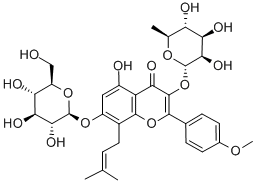
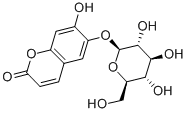
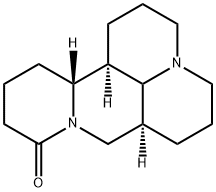
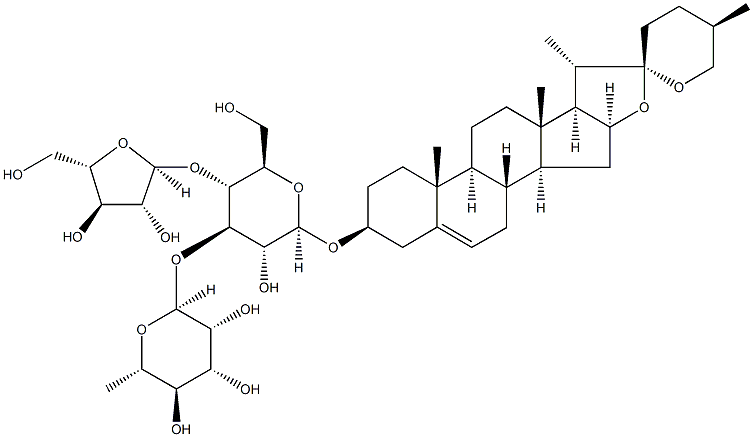
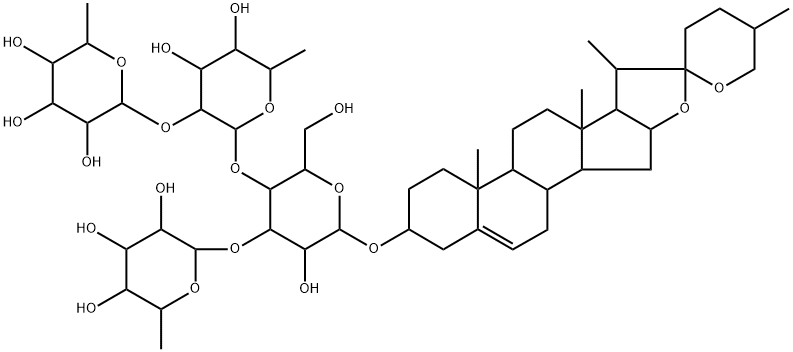
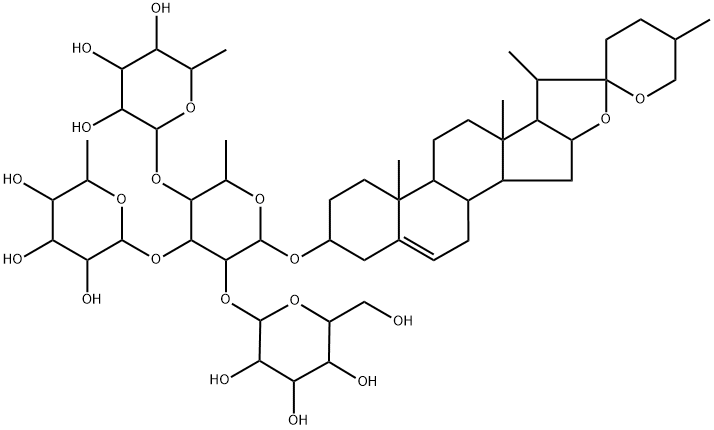
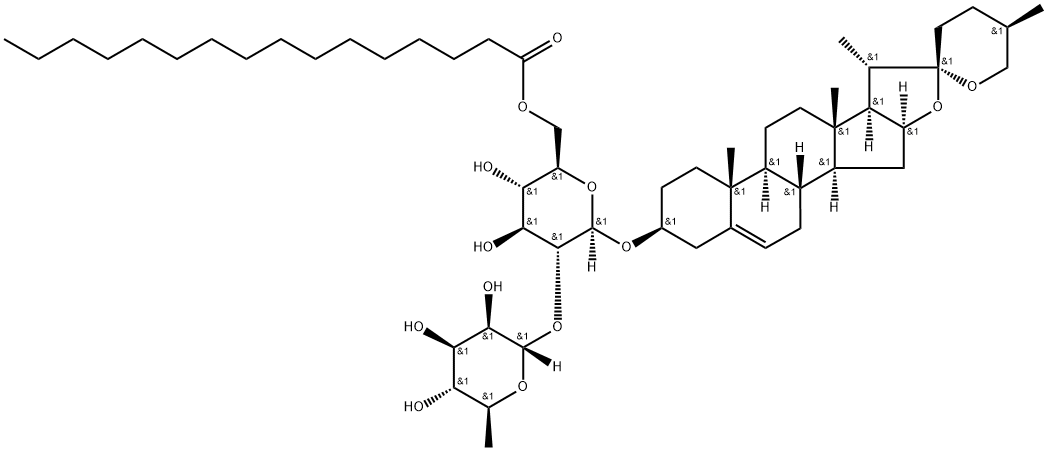
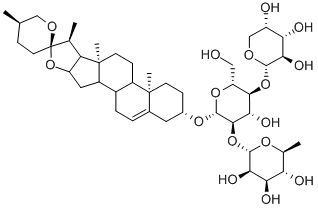
You may like
-
 Dioscin CAS 19057-60-4View Details
Dioscin CAS 19057-60-4View Details
19057-60-4 -
 Pyridine 99.5% HPLC /UV SpectroscopyView Details
Pyridine 99.5% HPLC /UV SpectroscopyView Details
110-86-1 -
 Guanine , 99%View Details
Guanine , 99%View Details
73-40-5 -
 Piperazine Spot supply, best priceView Details
Piperazine Spot supply, best priceView Details
110-85-0 -
 Dibutyl PhthalateView Details
Dibutyl PhthalateView Details
84-74-2 -
 Imidazole Spot supply, competitive priceView Details
Imidazole Spot supply, competitive priceView Details
288-32-4 -
 Octadecyl 3-(3,5-di-tert-butyl-4-hydroxyphenyl)propionate 98% (GC)View Details
Octadecyl 3-(3,5-di-tert-butyl-4-hydroxyphenyl)propionate 98% (GC)View Details
2082-79-3 -
 Thiourea 99% ARView Details
Thiourea 99% ARView Details
62-56-6
